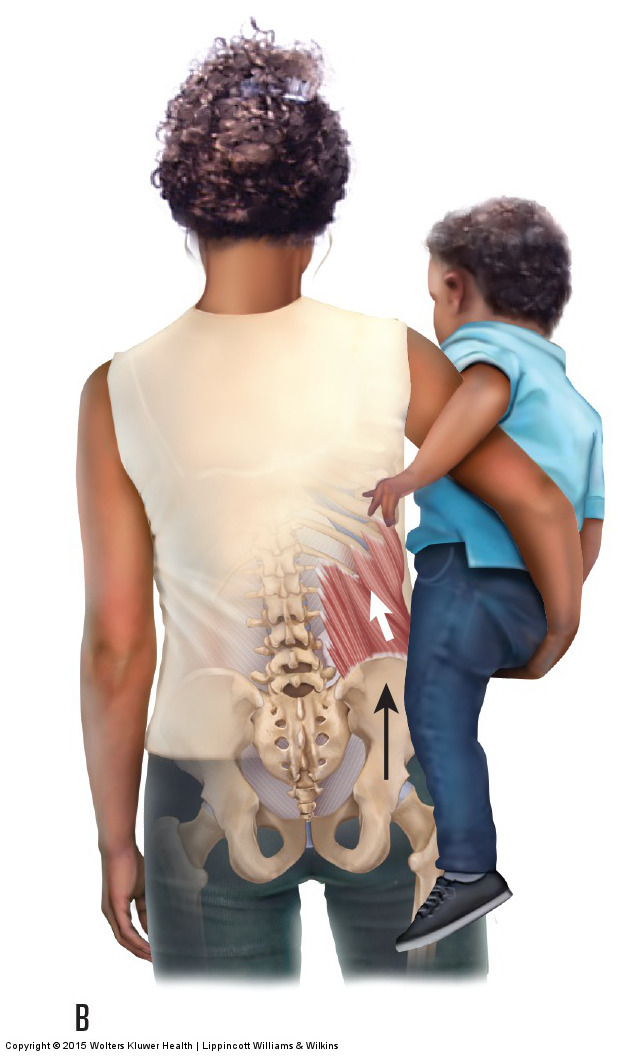Signs and Symptoms of Sacroiliac Joint Dysfunction
Sacroiliac joint dysfunction (SIJ dysfunction) may be symptomatic or asymptomatic, depending on the type and severity of the dysfunction. A hypermobile SIJ is likely to be symptomatic because of the instability and excessive mobility that occurs at the joint. This can cause pain directly at the joint, which can also refer into the buttock and down into the posterolateral thigh. This usually triggers muscles around the SIJ to tighten in an attempt to stabilize the joint, and this muscle tightening can then be another source of pain. A hypomobile sacroiliac joint dysfunction is less likely to cause pain, but may if the articular surfaces of the hypomobile SIJ are compressed and jamming into each other, causing irritation to the joint. Ironically, any pain or dysfunction at the joint may then trigger muscle tightening to splint and protect the joint, which then results in further hypomobility. And this muscle spasming is often the source of pain with a hypomobile SIJ.

Many postures and activities can cause sacroiliac joint dysfunction and pain. Permission: Joseph E. Muscolino. Manual Therapy for the Low Back and Pelvis – A Clinical Orthopedic Approach (2015).
Because of the tendency of one SIJ to compensate for the other when motion is dysfunctional, typically both SIJs become dysfunctional. For this reason, it is very common for symptoms to be felt on both sides. It is also common for the client/patient to experience the pain on one side one day, and then feel the pain on the other side the next day. In other words, the side of SIJ pain often flip-flops from side to side.
When the SIJ does result in pain, it can be sharp in quality, but most of the time it is dull. Depending on the severity of the dysfunction, the dull pain can be very strong and throbbing. Characteristically, SIJ pain increases with prolonged sitting and to a lesser degree prolonged standing and bending. Activity such as walking can be very painful if the dysfunction is severe because of the forces that are placed through the joint, but when the condition is milder, walking often helps to loosen and improve a hypomobile SIJ. Because muscle-splinting tightness so often accompanies SIJ dysfunction, pain characteristic of muscle tightness is usually at least part of the condition of SIJ dysfunction.
Forces can be placed through the SIJ from the axial body above, and from the lower extremity distally. If the SIJ is dysfunctional and painful, weight-bearing of any sort, for examples, sitting, standing, walking, etc., will usually result in increased pain. Carrying heavy loads only adds to the physical stress upon the joint and therefore causes or increases pain. Similarly, movements of the lower extremity can also increase SIJ pain because motion of the femur places a demand for motion into the SIJ via femoropelvic rhythm (a rhythm to the coupled movements of the femur and the pelvis). Weight-bearing movement of the lower extremity also increases SIJ pain due to the shock wave of the force of hitting the ground traveling up through the body (ground reaction forces).


